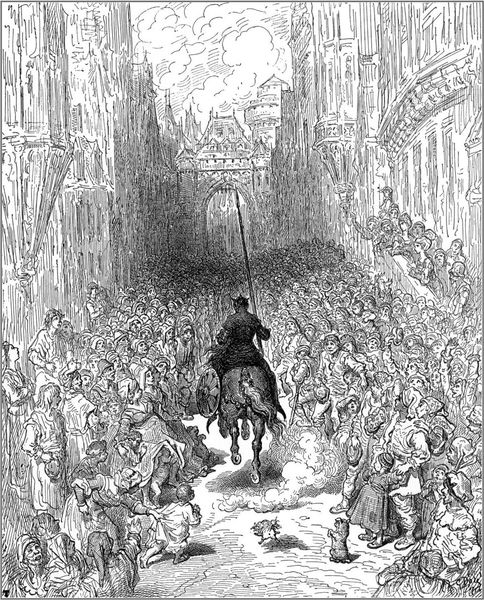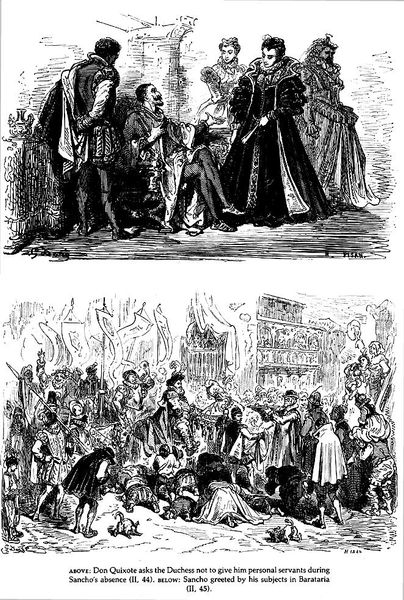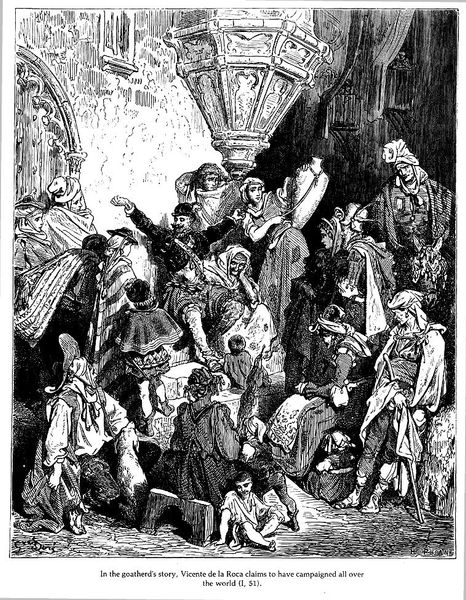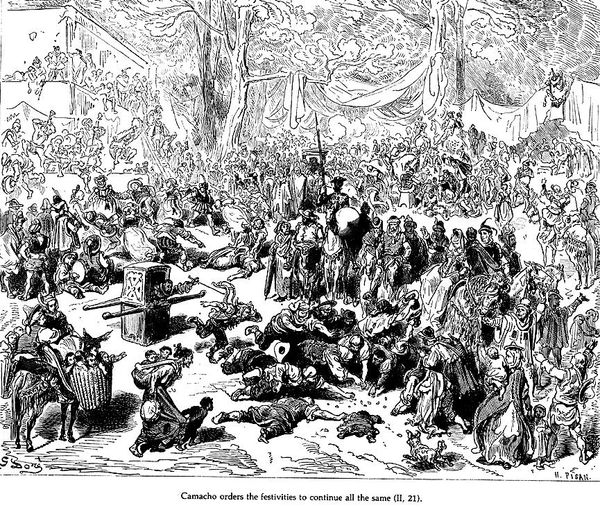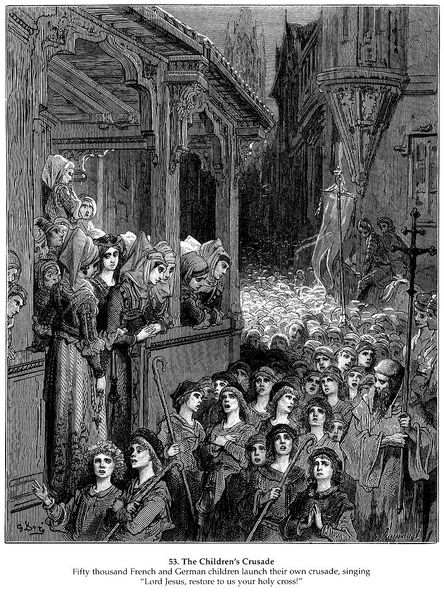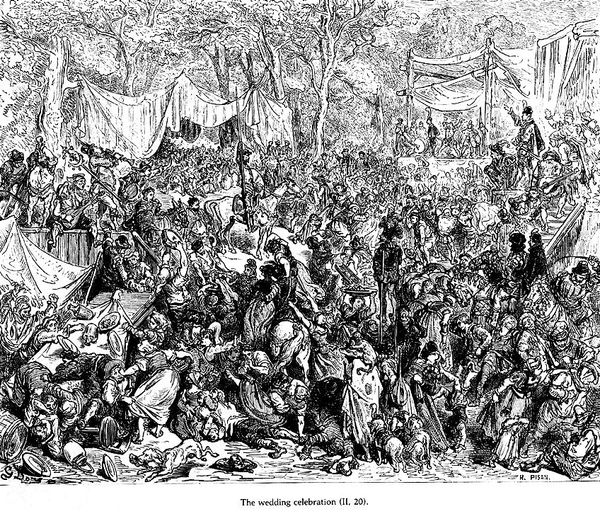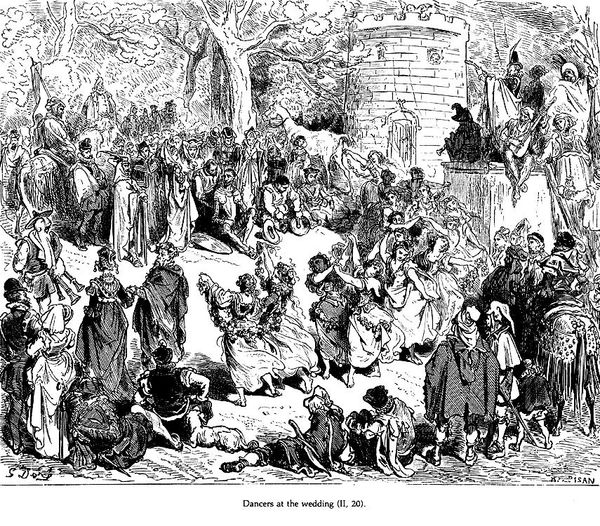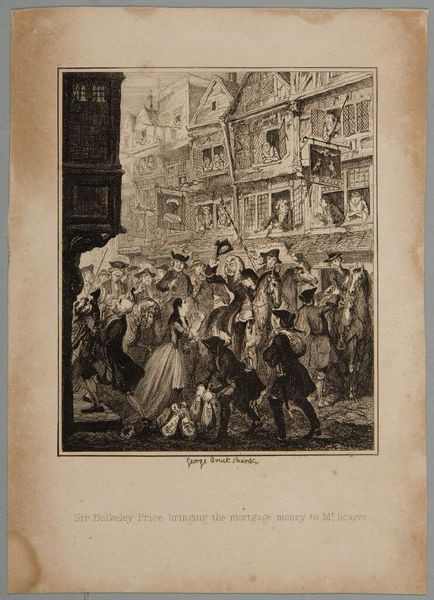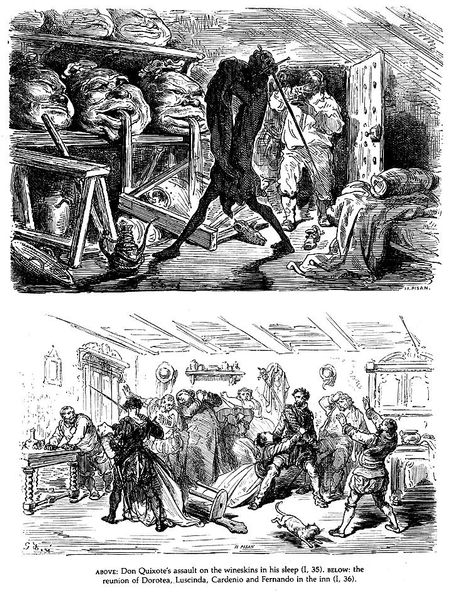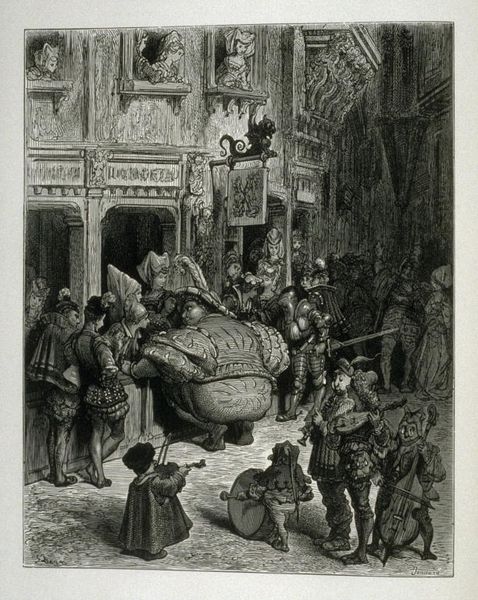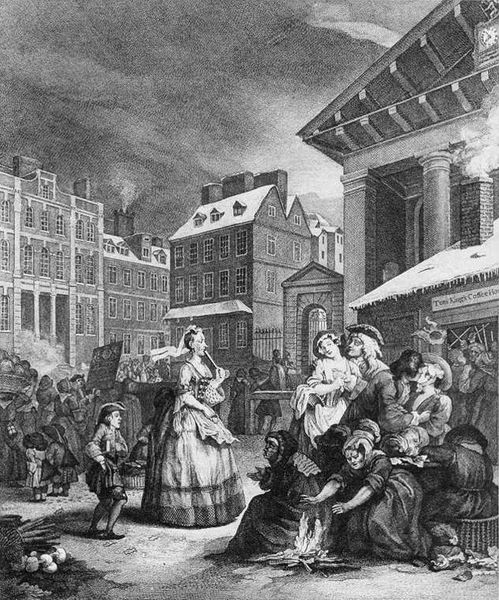
drawing, ink, pen, engraving
#
drawing
#
medieval
#
narrative-art
#
animal
#
mechanical pen drawing
#
pen illustration
#
landscape
#
figuration
#
ink line art
#
ink
#
horse
#
pen work
#
pen
#
cityscape
#
engraving
Copyright: Public domain
Editor: Here we have Gustave Doré's "Don Quixote", made using pen and ink engraving. The chaotic energy of the composition, with figures packed so densely, gives the sense of a bustling city square. What do you see in this piece, beyond the initial impression? Curator: I see a critical commentary on power, delusion, and the romanticized visions of heroism prevalent in Doré’s time. Look at the clear class divisions – the wealthy observing from balconies, the commoners crammed below. How does Doré use the figure of Don Quixote himself to reflect on societal structures? Editor: He seems very central, almost heroic...but surrounded by such a frenzy! Is Doré glorifying or critiquing the figure? Curator: That’s precisely the tension! Doré positions Don Quixote within a historical and social context ripe with inequalities. Is Don Quixote a champion of the people, or is he blinded by his own idealism, failing to see the realities of the world around him, the inequalities, even his own absurdity? How do his actions affect those in a lower social position? Editor: So, it's less about the literal story of Don Quixote and more about what he represents? Curator: Exactly! Consider the performance of chivalry and how it intersects with socio-economic realities. Doré invites us to examine the stories we tell ourselves about heroism, challenging us to confront uncomfortable truths about power, class, and individual agency. What impact do these heroic tales have on gender, race and politics within the social context? Editor: This really challenges my initial interpretation; I see the piece so differently now. Curator: It's about peeling back layers of narrative to reveal the societal forces at play. Art can make a start point for social change!
Comments
No comments
Be the first to comment and join the conversation on the ultimate creative platform.
